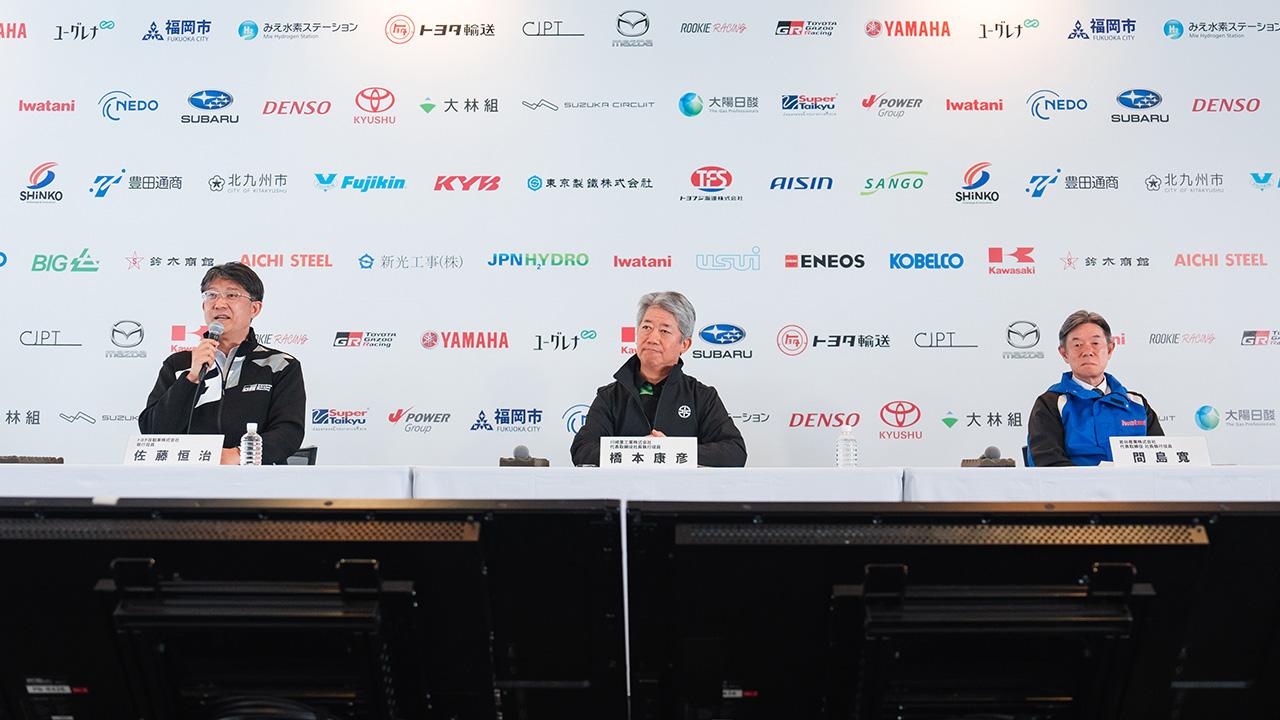
"We're under no illusions about the challenge ahead," tells President Koji Sato as Toyota looks to debut a car running on liquid hydrogen in May's 24-hour race.

With the Super Taikyu season kicking off at Suzuka Circuit in Mie Prefecture, Toyota indicated that the first race for its liquid hydrogen-powered GR Corolla would be the Fuji 24 Hours in May.
The car caught fire during a test run at the circuit on March 8 and could not be repaired in time to compete in the opening round on March 18.
Now the liquid hydrogen-powered car will be thrown straight into the deep end with a 24-hour endurance race, the most grueling event of the series. And yet, President Koji Sato shows no hesitation.
“Looking back, our first race using gaseous hydrogen was also a 24-hour event, so we’re under no illusions about the challenge ahead. We were ready for the technical preparation required to get us through 24 hours. Morizo even saw it as fateful.”
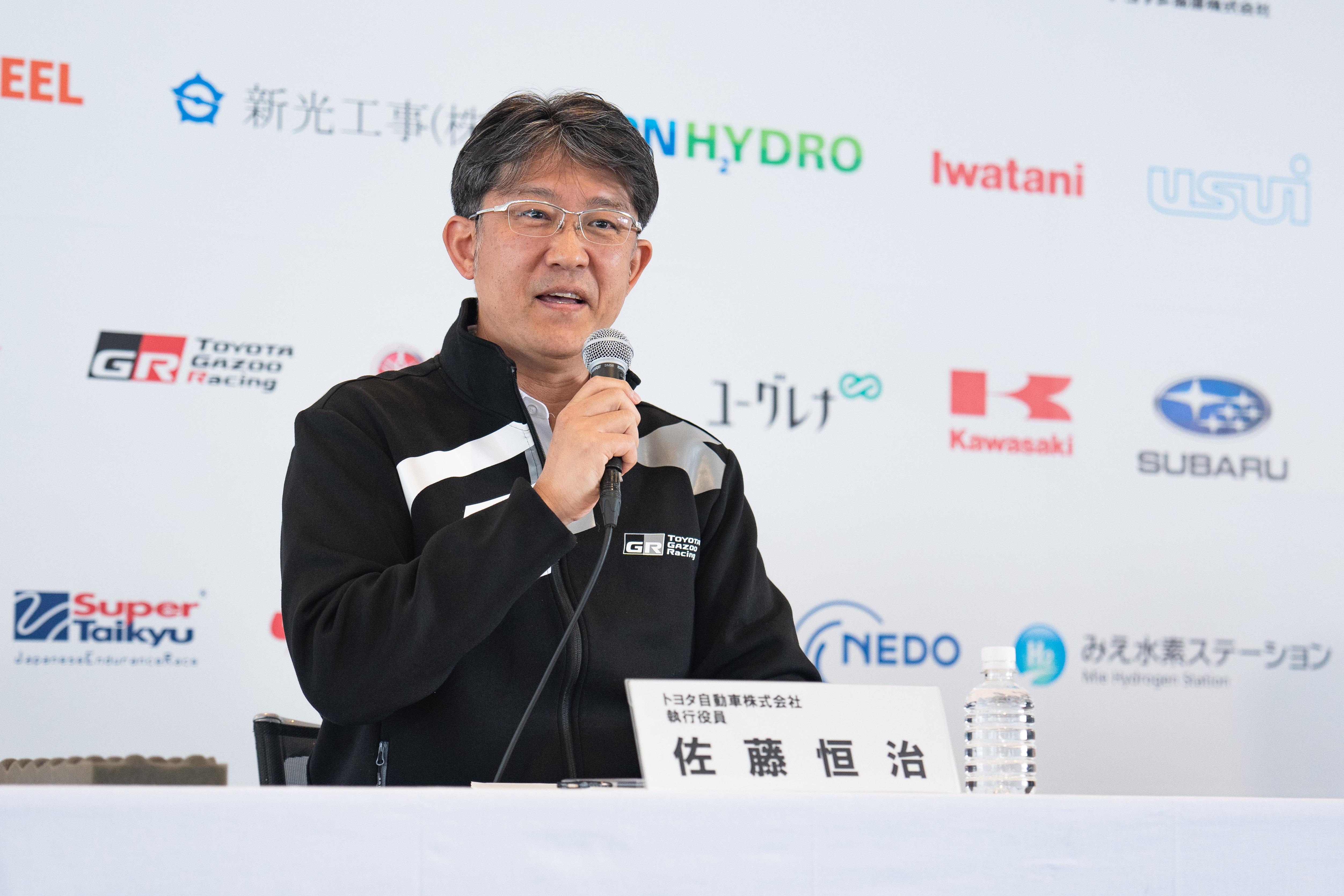
What caused the fire and what it demonstrated
Hearing that a hydrogen-fueled car caught fire may lead some to presume that hydrogen is dangerous or that an explosion took place.
However, the facts of the incident tell a very different story.
The fire was caused by a loosened joint in the hydrogen supply piping. Hydrogen leaked from the joint and ignited, burning the surrounding plastic parts.
The leak occurred at the joint nearest to the engine, where it is exposed to the engine’s movement and vibration as the car accelerates or slows down.
At the same time, the incident also demonstrated that the safety equipment was functioning properly, shutting down the hydrogen supply in less than 0.1 second.
As a result, the fire was extinguished before it could spread, and no one was injured.
In addition to revising the structure of the joint, the team will modify the design to isolate it from heat sources and stop the flow of hydrogen in the event of a leak.
Turning an image of danger into the future
In explaining the chain of events, Toyota continued to emphasize a key point: the fire was caused by a design issue and did not mean that hydrogen was inherently dangerous.
As GAZOO Racing Company President Tomoya Takahashi explained, “Given a spark, gasoline will burn in any environment. Hydrogen, on the other hand, only ignites at certain concentrations and temperatures. Specifically, it needs a 4% concentration in air and a temperature of at least 550℃—that is, hydrogen will not ignite under any other conditions.”
Similarly, neither President Sato nor Chairman Toyoda regard the matter as a serious incident.
President Sato
This car competes in the ST-Q class, a category set up with the goal of developing technology that will play a part in creating our future mobility society. The purpose of such testing is to identify issues.
Getting a car running on liquid hydrogen at racing speeds is something no one in the world has ever done before.
The key is figuring out how to build on the issues that emerge. We plan to keep moving forward with continuous improvement.
Chairman Toyoda
I see it as par for the course in the world of racing.
We undertook this effort to help create a hydrogen society. As we’ve said from the outset, the future will be shaped by acting with purpose and passion. Even as the engineers say it can’t be done, they’ve managed to develop the technology in an agile way while competing well and keeping an eye on what’s going on around us.
I drive the car myself, and we’re not giving up on the project. I want people to see hydrogen not as a danger, but as our future.
Companies committed to hydrogen
Although the hydrogen-powered car did not make an appearance at the Super Taikyu opening round, on the first day of the race, President Sato attended a press conference at Suzuka Circuit. He was joined by Kawasaki Heavy Industries President Yasuhiko Hashimoto and Iwatani Corporation President Hiroshi Majima, two other companies also striving to create a hydrogen society.
They vowed to accelerate efforts to turn hydrogen into a carbon-neutral option. All three company heads showed a strong determination to continue forging ahead with hydrogen.
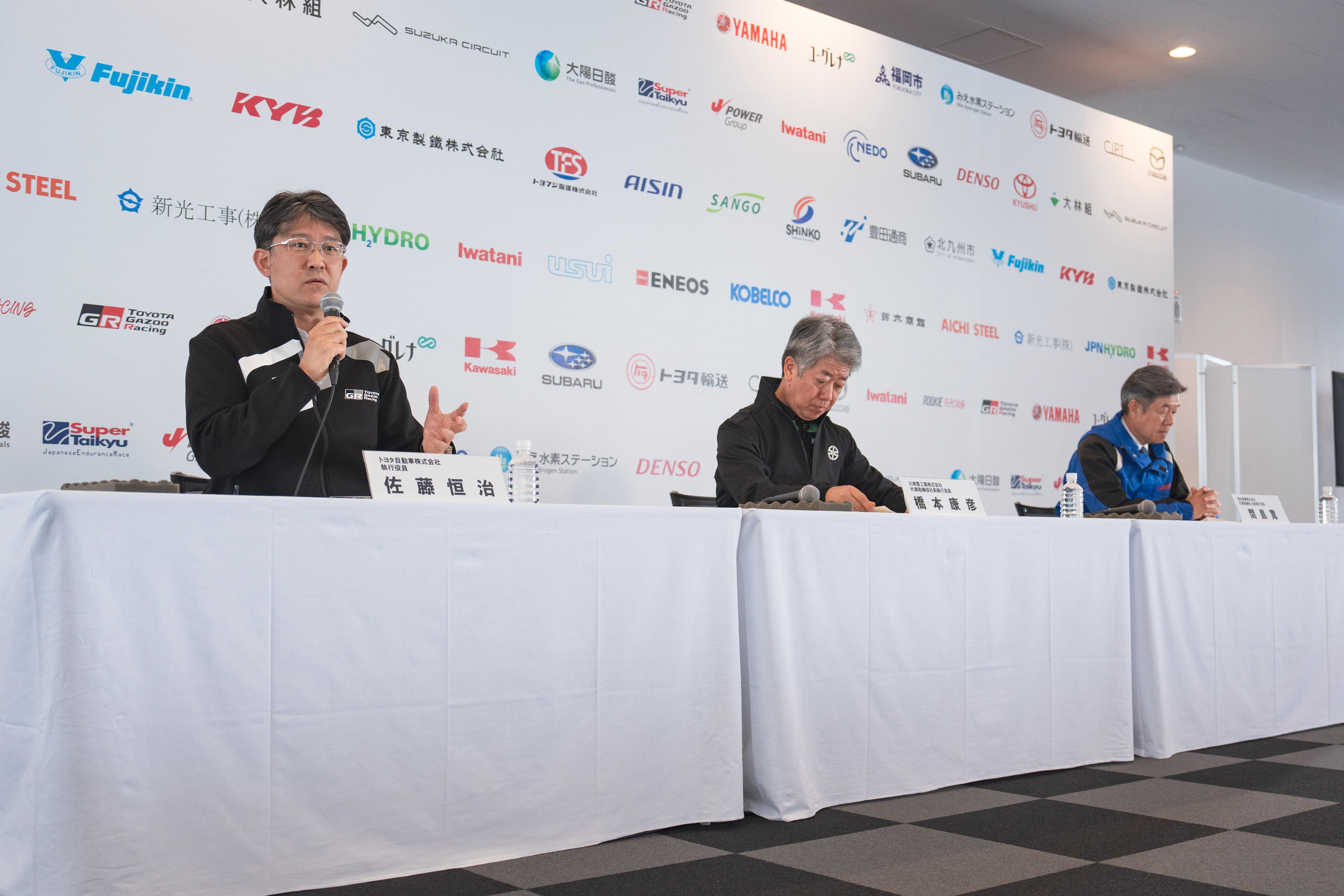
Kawasaki Heavy Industries joined Toyota’s Super Taikyu endeavor in 2021 as a partner transporting Australian hydrogen and has expanded its efforts from there. President Hashimoto used the example of liquefied natural gas (LNG) to explain the potential of liquid hydrogen.
President Hashimoto
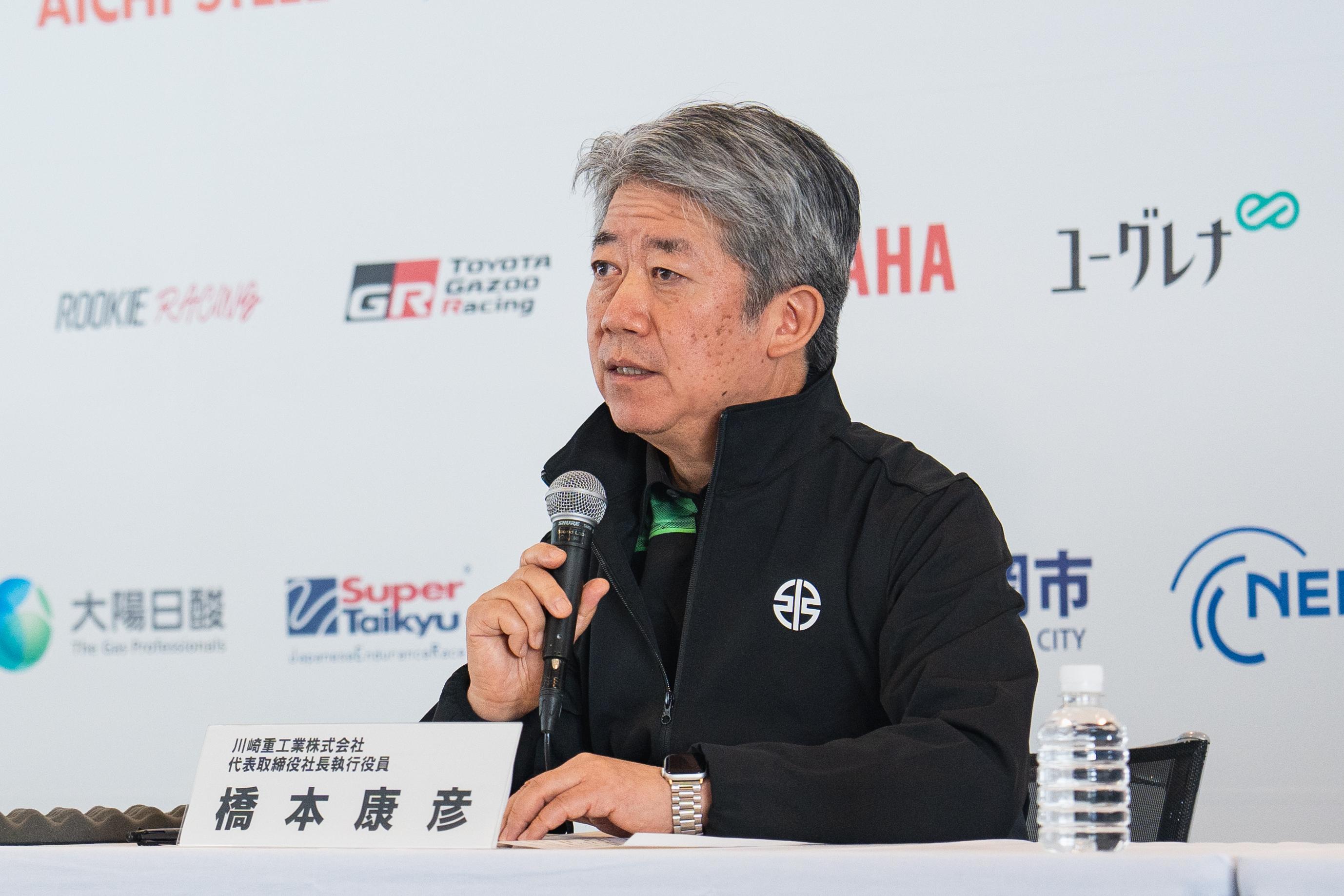
All of you probably regard LNG as an everyday source of energy.
And yet, when I joined Kawasaki in 1981 and we built Japan’s first large LNG carrier, the reaction was, “What are you going to do with that? Why bother liquefying gas for transport? Who is going to use something so expensive?”
Nonetheless, LNG has become indispensable in the push to increase the world’s energy options.
Hydrogen is very similar to natural gas, so that anything running on natural gas can easily be converted to hydrogen. It can also be turned into electricity. We can also explore new possibilities as a substitute for gasoline. Given its excellent combustibility, I think hydrogen shows great promise for use in engines.
We believe it is following the same trajectory once taken by LNG.
At a round table following the press conference, the safety of hydrogen was again called into question.
The response came from Manabu Tsuyoshi—General Manager of Iwatani’s Hydrogen Division, whose business spans everything from the procurement of raw materials to the production, transportation, and supply of hydrogen. Iwatani has been assisting Toyota’s Super Taikyu challenge in the hydrogen-powered car since the very first race.
General Manager Tsuyoshi
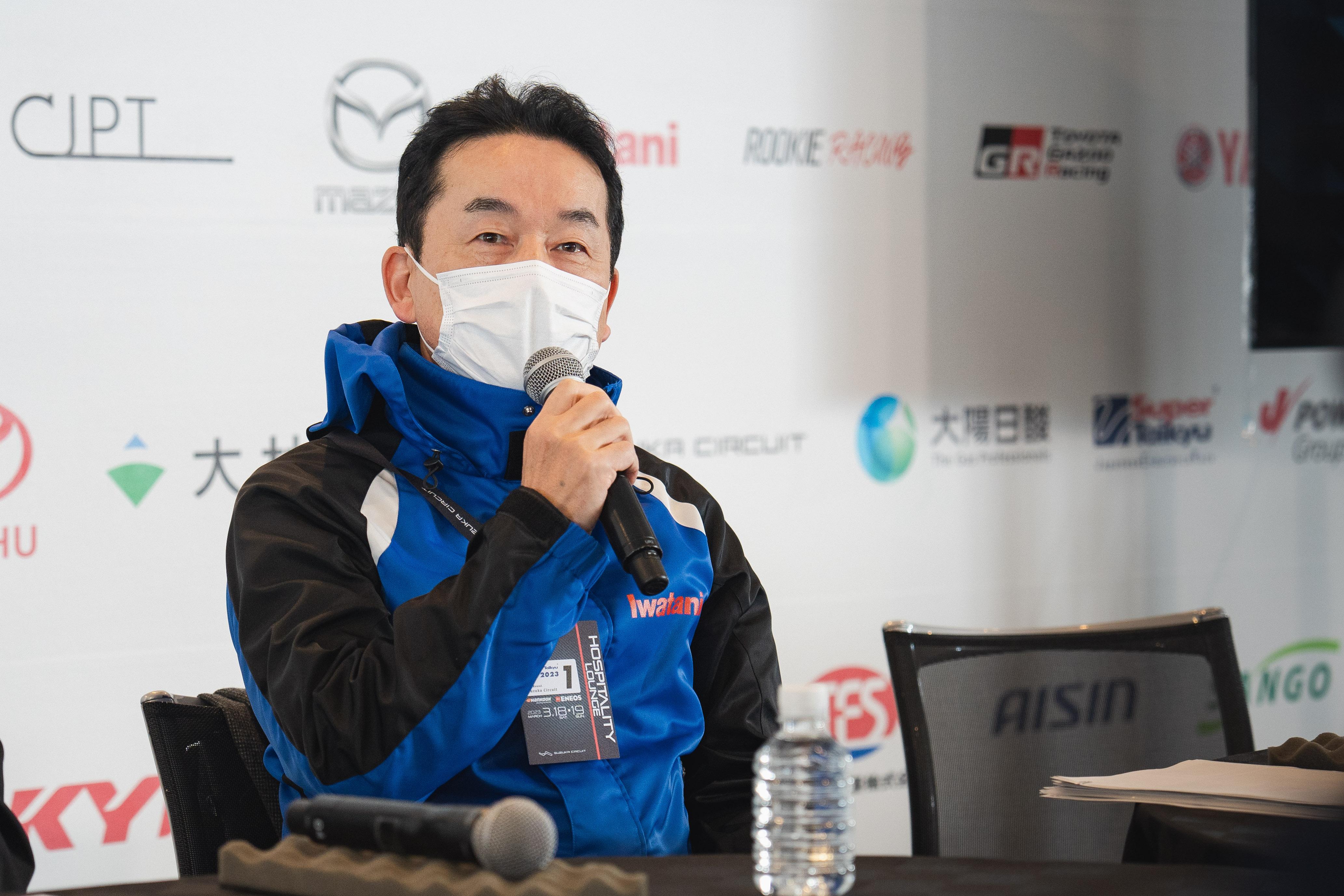
We have been working with hydrogen for some 80 years. Of course, hydrogen is dangerous.
However, as far as I am aware, this has not led to any accidents in the course of doing business. This is because we take the necessary caution.
Anything can be dangerous if used incorrectly. Even a kitchen knife can slice a finger if handled the wrong way. Yet these knives are essential for cooking. We work on the premise that hydrogen is dangerous and can leak if we make a mistake.
Rather than assuming leaks won’t happen, I think it’s important that we approach the next race with the mindset that they may occur. We must double- and triple-check the design and operation to ensure that leaks are identified, not allowed to accumulate, and do not lead to harm.
The challenge continues with the 24-hour race
At present, the development team is working around the clock to prepare the car for next month’s 24-hour race. President Sato described the genba mood.
President Sato
Despite the tough task, the team is highly motivated and determined to create an option for the mobility society of the future.
We hope to maintain that motivation and draw on the lessons we have learned as we continue working to realize our vision.
With purpose and passion, the group of like-minded partners continues to take on the challenge, believing in the potential of hydrogen as an energy source and eager to turn it into a carbon-neutral option.
Even now, development is underway to explore the uncharted territory of racing with liquid hydrogen.

